
For 1250x1250 jpeg of this maze, click the image.
For 1000x1000 jpeg of this maze, click here
Saving more lives at lower costs. Just what you'd expect, from Team Of Monkeys. Order Today!
By Yonatan Frimer and RSL
Click here for more monkey mazes
Mazes of the famous Susan Boyle and a bunch of other mazes too.






The footage of the death of Neda Agha-Soltan[6] (Persian: ندا آقا سلطان - Nedā Āġā Soltān; 1982 – June 20, 2009) drew international attention after she was killed during the 2009 Iranian election protests.[7] Her death was captured on video by bystanders and broadcast over the Internet[8] and the video became a rallying point for the reformist opposition.[8] Nedā (ندا) is a word used in Persian to mean "voice", "calling," or "divine message," and she has been referred to as the "voice of Iran."[9][10][11]. She was filmed as she lay dying on the street. Her death thus became iconic in the struggle of Iranian protesters against what they said was the fraudulent election of President Mahmoud Ahmadinejad.
On June 20, 2009, at around 6:30 p.m., Neda Agha-Soltan was sitting in her Peugeot 206 in traffic on Kargar Avenue in the city of Tehran.[8] She was accompanied by her music teacher and close friend, Hamid Panahi, and two others, who remain unidentified.[12][13] The four were on their way to participate in the protests against the outcome of the 2009 Iranian presidential election.[14] The car's air conditioner was not working well, so she stopped her car some distance from the main protests and got out on foot to escape the heat. She was standing and observing the sporadic protests in the area when she was shot in the chest.[15]
As captured on amateur video,[8] she collapsed to the ground and was tended to for several seconds. Someone in the crowd around her shouted, "She has been shot! Someone, come and take her!"[16] The videos were accompanied by a message from a doctor, later identified as Dr. Arash Hejazi, who said he had been present during the incident (but has since fled Iran out of fear of government reprisals):[17]
"At 19:05 June 20th Place: Kargar Ave., at the corner crossing Khosravi St. and Salehi st. A young woman who was standing aside with her father [sic, later identified as her music teacher] watching the protests was shot by a Basij member hiding on the rooftop of a civilian house. He had clear shot at the girl and could not miss her. However, he aimed straight her heart. I am a doctor, so I rushed to try to save her. But the impact of the gunshot was so fierce that the bullet had blasted inside the victim’s chest, and she died in less than two minutes. The protests were going on about one kilometre away in the main street and some of the protesting crowd were running from tear gas used among them, towards Salehi St. The film is shot by my friend who was standing beside me."
Her last words were, "I'm burning, I'm burning!" She died en route to Tehran's Shariati hospital.
Hejazi, standing one metre away from her when she was shot, tried to staunch her wound with his hands. Hejazi said nearby members of the crowd pulled a man from his motorcycle while shouting: "We got him, we got him," disarmed him, obtained his identity card and identified him as a member of the Basij militia (government paramilitary). The militiaman, identified as Abbas Kargar Javid (Persian: عباس کارگر جاوید - Abbās Kārgar Jāvɪd)[19], was shouting, "I didn't want to kill her." The protesters let him go, but they kept the alleged killer's identity card and took many photographs of him.[3] A recent documentary on the shooting contained a previously unseen clip of demonstrators capturing the militiaman seconds after the shooting.
| This section needs additional citations for verification. Please help improve this article by adding reliable references. Unsourced material may be challenged and removed. (November 2009) |
The videos spread across the internet virally, quickly gaining the attention of international media and viewers.Discussions about the incident on Twitter, using a hashtag of #neda, became one of the "'trending topics'" by the end of the day on June 20, 2009. The incident was not originally reported by the state-controlled Iranian media, but was instead first reported on by international media. The video has been shown on CNN and other news networks.
There are two videos depicting her death; one shows her collapsing to the ground, apparently still conscious. The second shows her only after she appears to lose consciousness and begins to bleed heavily.
In the first video, the cameraman approaches a group of people huddled together in front of a parked car at the side of the street. As he moves closer, she can be seen collapsing to the pavement with a large bloodstain at her feet. Two men, Hamid Panahi and Arash Hejazi, are seen trying to revive her. The elderly Panahi was initially assumed to be her father, but later confirmed to be her music teacher. As seconds pass, her eyes roll to one side and she appears to lose consciousness. Blood begins to pour from her nose and mouth, and screams are heard.
In the second video, the cameraman approaches her and the two men; the camera passes over them and centers on her face; her stare is blank and she is bleeding profusely from her nose and mouth. Loud screaming can be heard.
The man next to her can apparently be heard speaking in the first video, saying her name:
"Neda, don't be afraid. Neda, don't be afraid. [obscured by others yelling] Neda, stay with me. Neda stay with me!"
| Neda Agha-Soltan | |
|---|---|
 | |
| Died | Tehran |
| Resting place | Behesht-e-Zahra cemetery, southern Tehran |
| Residence | Meshkini Street, Tehranpars neighborhood, Tehran[25] |
| Nationality | Iranian |
| Alma mater | Islamic Azad University (graduate, philosophy and religion)[26][27] |
| Employer | Family's travel agency[28] |
| Known for | Death during the 2009 Iranian election protests |
| Political party | Known as generally apolitical |
| Relatives | Parents, one brother, one sister |
Agha-Soltan was the middle child of a middle-class family of three children, whose family resided in a fourth floor apartment on Meshkini Street in the Tehranpars neighborhood of Tehran.Her father is a civil servant and her mother is a homemaker. She graduated from Islamic Azad University, where she had studied Islamic theology as well as secular philosophies. She was divorced, and according to her mother, had difficulty finding work because how employers perceived her.
Agha-Soltan was an aspiring, underground Persian popular singer and musician, who was studying her craft through private voice and music lessons.[32][33] She had studied the violin and had an as-yet-undelivered piano on order at the time of her death. She worked for her family's travel agency.Agha-Soltan enjoyed travelling, having saved up money to go on package tours with her friends to Dubai, Thailand and Turkey. She had studied Turkish, hoping it would aid her as a guide for Iranians on foreign tours in Turkey. It was in Turkey, two months prior to her death, that she met her fiancé, 37 year old Caspian Makan, who worked as a photojournalist in Tehran.
Those who knew her maintain that Agha-Soltan had not previously been very political – she had not supported any particular candidate in the 2009 Iran elections – but that anger over the election results prompted her to join the protest. Her voice and music teacher, Hamid Panahi, who was accompanying Agha-Soltan during the protest and can be seen on the video trying to comfort the dying woman, told the media: "She couldn't stand the injustice of it." Panahi went on to state: "All she wanted was the proper vote of the people to be counted. She wanted to show with her presence that, 'I'm here, I also voted, and my vote wasn't counted'. It was a very peaceful act of protest, without any violence."
After being pronounced dead at Shariati hospital, Agha-Soltan was buried at the Behesht-e Zahra cemetery in southern Tehran; she was denied a proper funeral by government authorities. The authorities had allegedly set aside empty graves for those killed during the protests. Her family agreed to the removal of her organs for transplanting to medical patients. The Iranian government has issued a ban on collective prayers in mosques for Agha-Soltan in the aftermath of the incident.Soona Samsami, the executive director of the Women's Freedom Forum, who has been relaying information about the protests inside Iran to the international media, told the foreign press that Agha-Soltan's immediate family were threatened by authorities if they permitted a gathering to mourn her. Samsami stated, "They were threatened that if people wanted to gather there the family would be charged and punished."
Caspian Makan (Agha-Soltan's fiancé) told BBC: “Neda had said that even if she lost her life and got a bullet in her heart, she would carry on”.
Time and other news sources have speculated that due to the widespread attention given to Agha-Soltan's story by social media networks and mainstream news organizations, she is already being hailed as a martyr. There is also speculation that the Shi'ite cycle of mourning on the third (June 23), seventh (June 27), and 40th (July 30) day after a person's death may give the protests sustained momentum, in similar fashion to the Iranian Revolution, where each commemoration of a demonstrator's death sparked renewed protests, resulting in more deaths, feeding a cycle that eventually resulted in the overthrowing of Iran's monarchy.
On June 22, Iranian presidential candidates Mehdi Karroubi and Mir-Hossein Mousavi, who are contesting the validity of the election of Mahmoud Ahmadinejad, called upon Iranian citizens to commemorate Agha-Soltan. Karroubi announced his appeal on Facebook, asking demonstrators to gather in the center of the Iranian capital at 4:00 pm local time. The chief of the Tehran Police announced that his department had no involvement in the fatal incident. Later that day, riot police armed with live ammunition and tear gas dispersed a crowd of between 200 and 1,000 protesters who had gathered in Tehran's Haft-e Tir Square. The protests followed online calls for tribute to Agha-Soltan and others killed during the demonstrations. Grand Ayatollah Hossein-Ali Montazeri, a senior Iranian cleric and vocal critic of Mahmoud Ahmadinejad, called for three days of public mourning for the death of Neda.
| This section needs additional citations for verification. Please help improve this article by adding reliable references. Unsourced material may be challenged and removed. (November 2009) |
About 70 mourners gathered outside Niloufar mosque in Abbas Abad, where the Agha-Soltan family attended services. A leaflet posted on the mosque's door read, "There is no commemoration here for Neda Agha Soltan." Many in the crowd wore black. Some recited poems. After about ten minutes, 20 Basij paramilitary arrived on motorcycles and dispersed the attendees.
On June 24, The Guardian reported the results of interviews of neighbours who said Agha-Soltan's family had been forced to vacate their apartment some days after her death. Reuters reported that supporters of presidential candidate Mir-Hossein Mousavi stated they would release thousands of balloons on Friday, June 26, 2009 with the message "Neda you will always remain in our hearts" imprinted on them.
On July 3, many expatriates from Muslim countries expressed their wish to visit Agha-Soltan's burial site in peace, as close as possible to the 2-week anniversary of her death, on July 4 and 5.
On June 23, it was reported that, to prevent Agha-Soltan's family's home from becoming a place of pilgrimage, government authorities told the family to remove the black mourning banners from outside the home.
On Friday 31 July 2009, 40th day anniversary of the killings of such youth as Neda Agha Soltan, Sohrab Aarabi and Ashkan Sohrabi was held in Tehran where thousands of Iranians mourned for the loss of the victims. Reports also came of gatherings in the thousands in cities of Rasht, Shiraz and Mashad.
On November 16, 2009, supporters of the Iranian regime had desecrated her grave and removed her gravestone.
The university branch of female members of Basij held a gathering in Tehran in front of the British embassy, demanding that Arash Hejazi is returned to Iran (as witness or suspect). As they are assumed to be close to the government, it means the government condemns the crime and is pursuing it (their way). According to an Iranian official, announcing her as a martyr is possible. Iran's ambassador to Mexico, Mohammad Hassan Ghadiri, suggested in an interview on June 25, 2009 that the CIA could have been involved in Agha-Soltan's death. Ambassador Ghadiri questioned how the shooting was video taped so effectively, asserting that the incident occurred away from other demonstrations. He also stated that using a woman would be more effective in accomplishing the goals the CIA is purported to desire. Ambassador Ghadiri said "the bullet that was found in her head was not a bullet that you could find in Iran" (he thought she was shot in head). The account of Doctor Hejazi was that Agha-Soltan was shot in the chest from in front, as there was no exit wound, and the video evidence showing a wound to the chest. Hejazi is the man seen in the video placing his hands on Agha-Soltan's chest to staunch her bleeding (as described above under section Circumstances of death).
During his Friday sermon on June 26, the Supreme Leader's appointed speaker Ayatollah Ahmad Khatami said "evidence shows that [protesters] have done it themselves and have raised propaganda against the system." Eye witnesses at the scene of the shooting said Agha-Soltan was shot by a member of the pro-government Basij militia.
Iran's police chief, brigadier general Ahmadi-Moghaddam told the press on June 30, 2009 that the Iranian police and Ministry of Intelligence filed an arrest warrant for Interpol to arrest Dr. Arash Hejazi, an eyewitness of Neda's death, for poisoning the international atmosphere against the Iranian government and telling misinformation about Neda's death by giving his account of the incident to foreign news media.
Ezzatollah Zarghami, the head of Islamic Republic of Iran Broadcasting, told the press on July 4, 2009 that the videos of Neda's death were all made by BBC and CNN.
In November 2009, Iran's embassy in London sent a letter of protest to Oxford University's Queens College about the college establishing the Neda Agha Soltan Graduate Scholarship in Philosophy.
According to The Times, quoted from Mr. Makan and Ms. Agha Soltan's parents, officials tried to get them to confess that it was opposition protestors that had killed Neda, and not government militiamen. They were given incentives such as declaring Neda to be a martyr and giving the family a pension if they complied. Mr. Makan and Neda's family refused the offer.
Mr. Panahi was later forced by the government to change his story. The new version of events were retold by Panahi on state television.





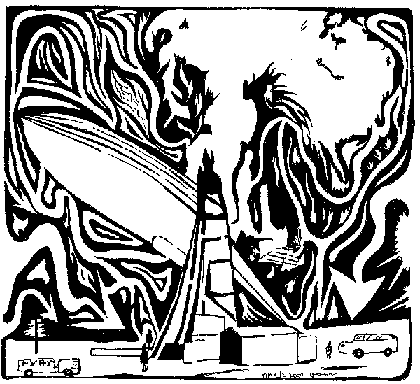



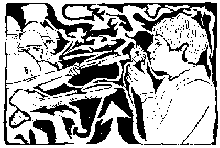
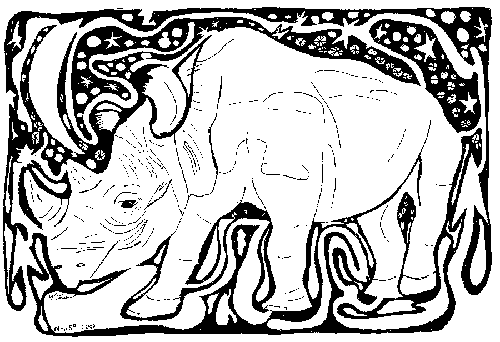

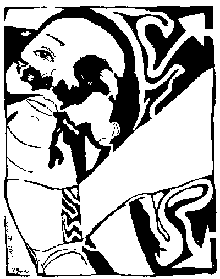













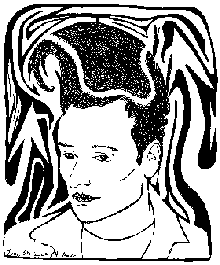
Hamas source tells al-Hayat newspaper 400 names agreed upon as part of exchange deal, but dispute remains over some 50 more prisoners, including Amneh Muna, who lured Israeli teen Ofir Rahum to Ramallah where he was murdered eight years ago Roee Nahmias Published: 12.01.09, 11:33 / Israel News
| Israel and Hamas agreed on the names of 400 prisoners to be freed in the first phase of an exchange deal for the release of captive soldier Gilad Shalit, but a dispute remains over the names of 50 additional prisoners, a Hamas official told al-Hayat newspaper. According to Tuesday's report in the London-based Arabic languages newspaper, the official said that a dispute remains over the release of three female Palestinian prisoners – Amneh Muna, convicted of the murder of Ofir Rahum eight years ago, as well as Ahlam al-Tamimi and Qahira a-Saadi. |
In addition, negotiations are ongoing over the release of Arab-Israeli and east Jerusalem prisoners. According to the report, Israel has agreed to include 17 east Jerusalem prisoners in the deal, out of which 10 are to be exiled out of the territories.
The source also said that Israel has proposed to expel 130 prisoners, but Hamas objects and is working to minimize the number. According to the source, the decision of expulsion will depend on the prisoners themselves.
The source further added that intensives takes were ongoing, and that the German mediator is remaining in Israel to finalize the deal.
The parents argued that the State was turning its back on them, but Supreme Court President Justice Dorit Beinish said that she had heard that in the meantime, there is no deal.


 Maze Portrait of Gilad Shalit - Headshot Maze in PDF Gilad Shalit Maze - PDF
Maze Portrait of Gilad Shalit - Headshot Maze in PDF Gilad Shalit Maze - PDF






 Maze Portrait of Gilad Shalit - Headshot Maze in PDF Gilad Shalit Maze - PDF
Maze Portrait of Gilad Shalit - Headshot Maze in PDF Gilad Shalit Maze - PDF




